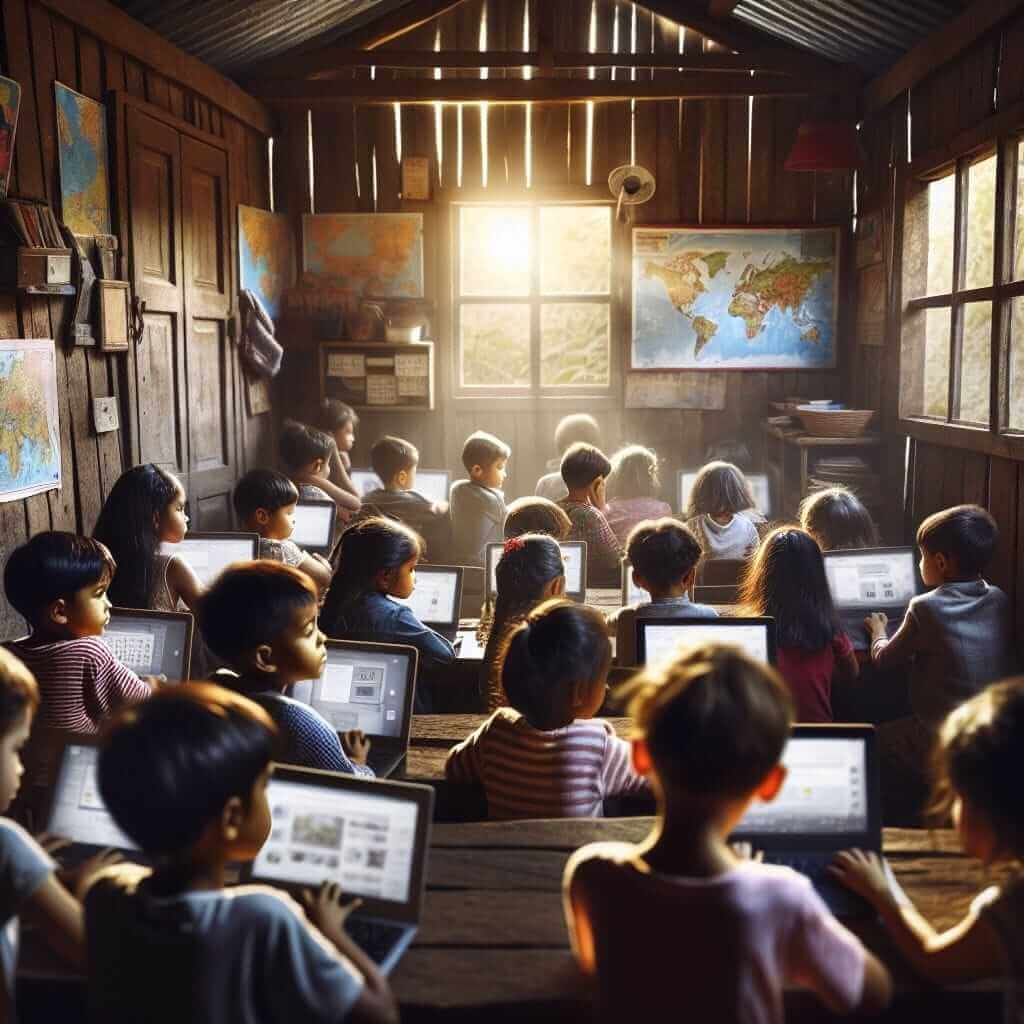“The role of technology in bridging the education gap” is a topic frequently discussed in academic circles and popular media. This subject is highly relevant to the IELTS exam, as it reflects global concerns about educational equity and the potential of technology. This article will delve into this topic, analyzing its significance, providing a sample essay, and offering valuable insights for IELTS Writing Task 2 preparation.
Understanding the Topic
“The Role of Technology in Bridging the Education Gap” in IELTS
This topic frequently appears in IELTS Writing Task 2, usually as an argumentative essay prompt. You might be asked to discuss the extent to which technology can bridge the education gap, analyze its benefits and drawbacks, or propose solutions for leveraging technology to promote educational equity.
Relevance and Frequency
The intersection of technology and education is increasingly relevant, mirroring real-world trends. Given the focus on digital learning solutions and efforts to address educational disparities, this topic remains highly probable for future IELTS exams.
Sample Essay Question
To what extent do you agree or disagree with the following statement? Technology has the potential to completely bridge the gap in educational opportunities between different socioeconomic groups.
Essay Analysis
This question requires you to present a clear stance on whether technology can entirely eliminate educational disparities stemming from socioeconomic differences. It’s crucial to avoid a simplistic “yes” or “no” answer and instead provide a nuanced argument supported by relevant examples.
Model Essay

It is widely asserted that technology possesses the transformative power to completely bridge the educational divide between different socioeconomic groups. While I acknowledge the significant contributions technology can make in this regard, I contend that it cannot single-handedly eradicate this complex issue.
On the one hand, technology undeniably empowers learners from disadvantaged backgrounds by providing access to a wealth of educational resources. Online learning platforms, for instance, offer a plethora of courses and materials, often at minimal or no cost. This allows students from low-income families to access quality education that might otherwise be inaccessible due to geographical constraints or financial limitations. Moreover, technology facilitates personalized learning experiences, catering to individual learning styles and paces. Students can learn at their own speed, revisiting concepts as needed, which can be particularly beneficial for those who require additional support.
However, while technology can mitigate the education gap, attributing its complete resolution solely to technological advancements is overly optimistic. The digital divide, characterized by unequal access to technology and digital literacy skills, remains a significant obstacle. Many underprivileged communities still lack reliable internet access, and even when available, the cost of devices like computers and tablets can be prohibitive. Furthermore, technology alone cannot address the multifaceted factors contributing to educational inequality, such as inadequate infrastructure, under-resourced schools, and societal biases.
In conclusion, while technology plays a pivotal role in expanding educational opportunities and narrowing the achievement gap, it is unrealistic to expect it to completely bridge the divide. Addressing this complex challenge requires a multi-pronged approach encompassing not only technological advancements but also social, economic, and political reforms aimed at creating a more equitable and inclusive education system for all.
(Word Count: 298)
Writing Notes
Vocabulary: Utilize a wide range of vocabulary related to technology, education, and social issues. Be mindful of using synonyms to avoid repetition and demonstrate lexical resourcefulness.
Grammar: Employ complex sentence structures and a variety of grammatical forms accurately. Pay attention to subject-verb agreement, tense consistency, and appropriate punctuation.
Coherence and Cohesion: Ensure a clear and logical flow of ideas throughout the essay. Use linking words and phrases effectively to connect paragraphs and sentences smoothly.
Vocabulary Focus
- Transformative (adj.): Having the power to completely change something. (Trans-for-ma-tiv)
- Disadvantaged (adj.): Lacking the necessary resources or opportunities enjoyed by others. (Dis-ad-van-taged)
- Plethora (noun): A large or excessive amount of something. (Pleth-or-a)
- Geographical constraints (noun phrase): Limitations imposed by location or distance. (Geo-graph-i-cal con-straints)
- Personalized learning (noun phrase): Tailoring educational experiences to individual needs and preferences. (Per-son-al-ized learn-ing)
- Digital divide (noun phrase): The gap between those with access to technology and those without. (Digi-tal di-vide)
- Digital literacy (noun phrase): The ability to use technology effectively and responsibly. (Digi-tal lit-er-a-cy)
- Prohibitive (adj.): So expensive as to prevent something from being done. (Pro-hib-i-tive)
- Multifaceted (adj.): Having many different aspects or features. (Mul-ti-fac-eted)
- Equitable (adj.): Fair and impartial. (Eq-ui-table)
Conclusion
This article has provided insights into “The role of technology in bridging the education gap” as a potential IELTS Writing Task 2 topic. Remember to develop a clear stance, support your arguments with relevant examples, and utilize a wide range of vocabulary and grammar accurately. Good luck with your IELTS preparation! You may also want to explore related topics such as The impact of online learning on educational inequality or The role of digital literacy in modern education.